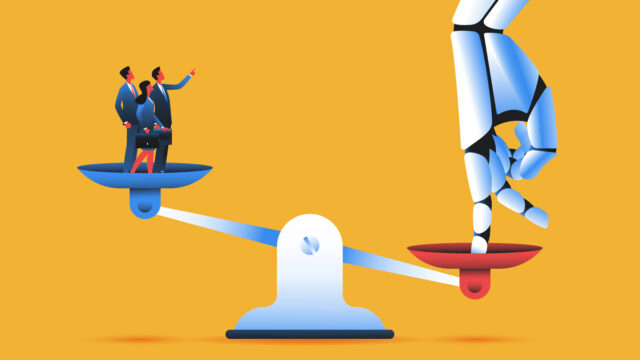Interactivity and Proprietary Data: Marketers Welcome Ads in Chatbots
Join ADWEEK for the first-annual Brand Play: Sports Marketing Summit, on May 9 in NYC or virtually. We’ll explore the new sports events, platforms, fan insights and cultural impacts that can unlock exciting wins for marketers. Register.
Advertisers are eager to understand how their ads, in different guises, can show up in generative AI-powered chatbot conversations.
While high-profile examples like OpenAI’s ChatGPT and Google’s Gemini don’t currently run ads, platforms such as Snap’s gen AI chatbot My AI—powered by Microsoft’s Chat Ads API—introduced sponsored links last September. Chinese tech firm Baidu and German media giant Axel Springer also use Microsoft’s Chat Ads API.
“Once all the big players have consumed data [from the free internet] and trained their models on it, [what will] make the AI tools stand out is the ability to use proprietary data,” said Graham Wilkinson, chief innovation officer at IPG Mediabrands marketing agency Kinesso.
Advertisers are hungry for new avenues to understand consumer behavior in light of the third-party cookie’s demise. For platforms, the cost of operating AI chatbots is enormous. Major players like Google, OpenAI and Microsoft are in an AI arms race, tinkering with monthly subscription models of $20 to bolster revenue.
Against this backdrop, different types of ad formats, including sponsored links and interactive conversations, emerge as a viable option. However, it’s too soon to judge ad effectiveness in this nascent market.
Sponsored links
Microsoft’s chatbot app Copilot currently includes links to web sources that the chatbot uses to provide relevant information, similar to how search engines from Microsoft and Google (which have integrated gen AI) include citations when they provide a response.

By 2026, according to Gartner, search marketing will lose market share to AI chatbots and other virtual agents, with traditional search engine volume dropping by 25%. While the ad market’s growth within chatbots remains to be seen, ad dollars tend to follow eyeballs.
Two-person startup Adzedek is testing ads via sponsored links within custom GPTs via OpenAI’s GPT store and chatbot apps using OpenAI’s API. In a video demo showcasing its service, the company showed a Nike-sponsored link appearing at the end of a response from a “basketball expert” chatbot. Axios reported that the firm uses a pay-per-click model, with 75% of the ad revenue going to the chatbot creator and Adzedek keeping 25%.
Advertisers could replicate their paid search strategies like keyword targeting within AI chatbots, said Jon Morgenstern, evp and head of investment at VaynerMedia.
Interactive formats
Another way ads could end up within AI chatbots is via interactive formats, using the conversational AI framework to move beyond interaction to drive conversion, said Wilkinson. While brands are yet to test these interactive ads, they can guide users through the sales funnel, providing relevant recommendations, facilitating transactions and ultimately converting consumers.
“When somebody prompts something to a chatbot and a relevant answer could be provided by a brand, then there’s no reason why you couldn’t dive into having a fully interactive conversation with that brand,” said Wilkinson.
For example, prompting ‘Plan my weekend in Nashville’ will see a chatbot generate a list of restaurants and hotels, which could prompt the following response: ‘What makes this restaurant so popular?’ In such cases, if the restaurant has signed up to use the LLM-based chatbot for advertising purposes, it can directly respond to provide information about its popularity, ultimately leading to a booking.
Ad placement will become more important in driving revenue, but companies looking to insert themselves into the conversation need to tread carefully so that placements are detailed and contextually relevant, said Nicole Greene, vp analyst at Gartner.
“Brands will also need to continually revisit their paid channel strategy, as chatbots join the list of sprawling channels that require different types of content to meet customers where they are,” she said.
The longer the response, the higher the price
Tokens, a term in data science that translates to chunks of words, are the units that vendors use to price their APIs. Different vendors, like OpenAI and Anthropic, use different tokenization methods and charge varying prices per token based on whether it’s an input or output token, or related to the model size.
However, the longer the response you get from an LLM, the higher the token count, according to Wilkinson.
“For interactive conversation ads, advertisers can get charged based on the length of the conversation,” said Wilkinson. “The more words that you share with the LLM, the deeper conversation you’re having. The longer a consumer stays in a conversation, the more information they find out about the product and are more likely to buy.”
https://www.adweek.com/media/why-marketers-welcome-ads-in-chatbots/

